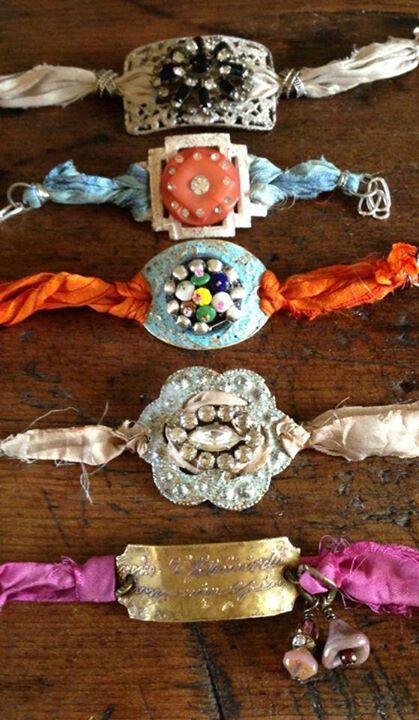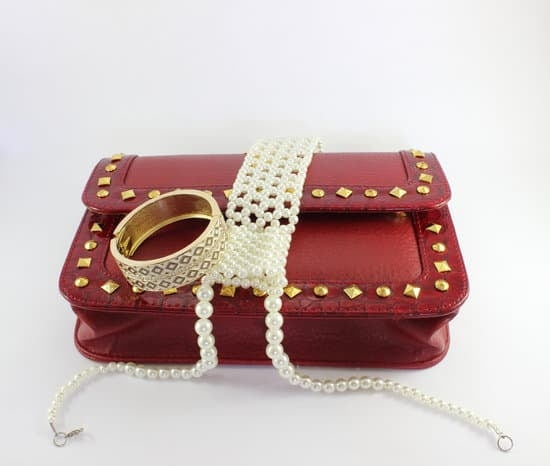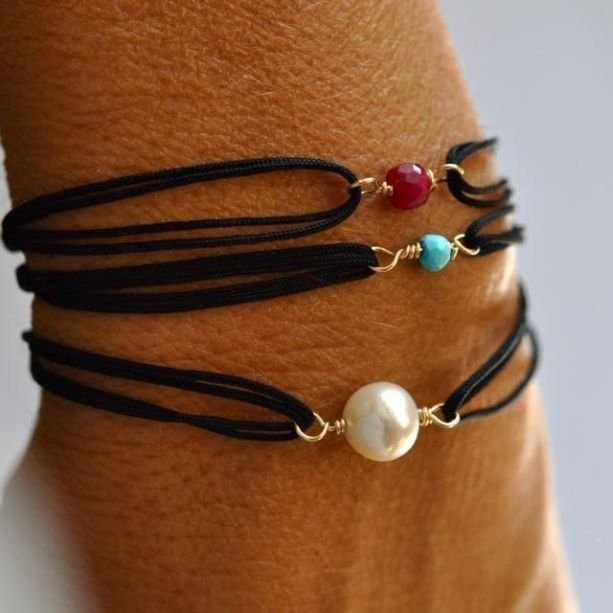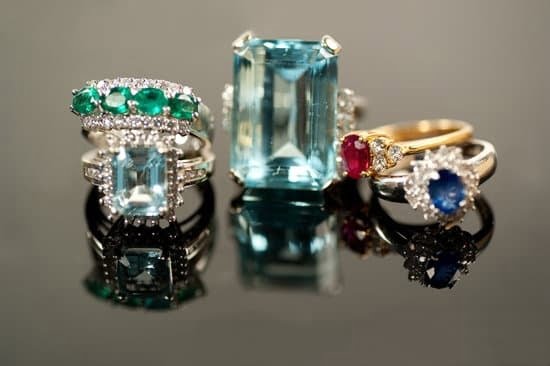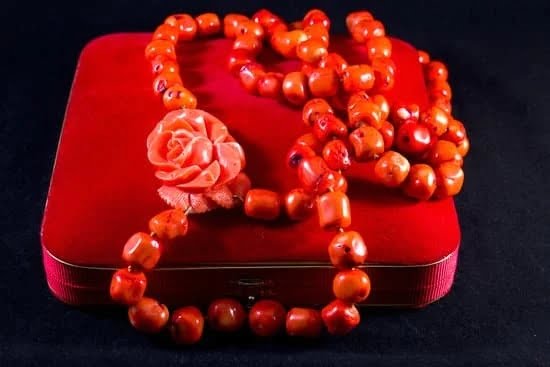Is fine jewelry a good investment? This question has been debated by investors and collectors for decades, as the allure of owning precious gemstones and exquisite pieces continues to captivate many. In this article, we will explore the various aspects of fine jewelry as an investment, from its historical significance to the current market trends.
When considering whether fine jewelry is a good investment, it’s important to understand what qualifies as “fine” jewelry and why it holds value. We will delve into the defining characteristics of fine jewelry and how its craftsmanship, rarity, and materials contribute to its allure as an investment.
The historical context of fine jewelry as an investment provides valuable insights into its enduring appeal. From ancient civilizations to modern-day collectors, the evolution of fine jewelry reflects changing tastes, economic shifts, and cultural influences. Understanding this history is essential in evaluating the potential long-term value of investing in fine jewelry.
Defining Fine Jewelry
Fine jewelry is often considered a good investment due to its timeless appeal and the value it holds over time. But what exactly qualifies as fine jewelry, and why does it hold such value? Fine jewelry is typically made with precious metals such as gold, platinum, or silver, and adorned with high-quality gemstones like diamonds, rubies, and sapphires. The craftsmanship and design of fine jewelry are also important factors that contribute to its value.
One of the main reasons why fine jewelry holds value is its intrinsic worth. Precious metals and gemstones have inherent value that can appreciate over time, especially as they become rarer. In addition, the craftsmanship and skill required to create fine jewelry add to its desirability and investment potential. Fine jewelry is also often passed down through generations, which adds sentimental value as well as financial worth.
The allure of fine jewelry as an investment is also rooted in its ability to retain its value despite economic fluctuations. Unlike some other investments that can be volatile, fine jewelry tends to hold steady or even increase in value over time.
This makes it an attractive option for those looking for a tangible asset that can provide long-term returns. Additionally, the prestige and status associated with owning fine jewelry add another layer of value that appeals to collectors and investors alike.
Historical Context
Fine jewelry has been a coveted form of investment for centuries, with its allure and value standing the test of time. Here are some key historical points that highlight the evolution of fine jewelry as an investment:
– Ancient Civilizations: Dating back to ancient civilizations such as Egypt, Rome, and Greece, fine jewelry was used not only for adornment but also as a symbol of wealth and power. Pieces were often crafted with exquisite gemstones and precious metals, signifying the owner’s status in society.
– Renaissance Period: During the Renaissance, fine jewelry saw a surge in popularity as advancements in design and craftsmanship led to the creation of intricate and ornate pieces. This era marked a shift towards the personalization of jewelry, with individuals commissioning custom pieces that were seen not only as status symbols but also as investments that could be passed down through generations.
– 20th Century: In the 20th century, iconic jewelry houses such as Cartier, Tiffany & Co. and Van Cleef & Arpels solidified the concept of fine jewelry as an investment by creating timeless designs that retained their value over time. The introduction of innovative techniques and the use of rare gemstones further elevated the appeal of high-end jewelry among investors.
The historical context illustrates how fine jewelry has transcended time and maintained its position as a valuable investment. From ancient civilizations to modern-day collectors, the enduring allure of these exquisite pieces continues to attract investors seeking both aesthetic beauty and financial growth.
Investing in fine jewelry is subject to various factors to consider when making such an investment decision. These factors include:
1. Quality and Rarity: Investing in fine jewelry requires careful consideration of the quality and rarity of the piece. Factors such as carat weight for gemstones, purity for precious metals, and craftsmanship all play a significant role in determining the value of a piece.
2. Brand Reputation: Established luxury brands with a strong reputation can command higher prices for their jewelry due to their brand equity. When considering an investment in fine jewelry, it is important to assess the prestige and history behind a particular brand.
3. Market Trends: Keeping abreast of market trends within the fine jewelry industry is crucial when making an investment decision. Understanding supply and demand dynamics, consumer preferences, and global economic conditions can help investors make informed choices when acquiring fine jewelry pieces.
Market Trends
The market for fine jewelry as an investment has been steadily growing in recent years. According to a report by McKinsey & Company, global demand for personal luxury goods, including high-end jewelry, reached an estimated $307 billion in 2018. This indicates a strong and resilient market for luxury items, making fine jewelry a potentially lucrative investment opportunity.
One trend that is driving the market for fine jewelry investments is the rise of online platforms and auctions dedicated to luxury goods. This has made it easier for investors to buy and sell valuable pieces without the need for physical stores or traditional auction houses. Additionally, there is an increasing interest in unique, one-of-a-kind pieces rather than mass-produced jewelry, which can drive up the value of these investments.
Another significant trend in the current market for fine jewelry investments is the growing demand from emerging economies such as China and India. As these countries experience rapid economic growth, there is an expanding class of affluent consumers who are seeking to invest in high-quality luxury items like fine jewelry. This surge in demand from new markets is creating a favorable environment for those looking to invest in this asset class.
Ultimately, with the global demand for personal luxury goods on the rise and new opportunities emerging in emerging markets, the current market trends suggest that fine jewelry is indeed a good investment option for those looking to diversify their portfolio with tangible assets.
| Market Trends | Analysis |
|---|---|
| Rise of online platforms | Makes buying and selling easier |
| Emerging economies’ demand | Increased demand from China and India |
Factors to Consider
Fine jewelry is a good investment for those who have a passion for fashion and style, and are looking for an asset that could potentially appreciate in value over time. When considering investing in fine jewelry, there are several factors to keep in mind.
One important factor to consider when looking at fine jewelry as an investment is the quality of the piece. High-quality materials such as diamonds, gold, and platinum can hold their value well over time, making them more likely to appreciate in value. Additionally, the craftsmanship and brand reputation also play a significant role in determining the worth of fine jewelry as an investment.
Another key consideration is the market demand for certain types of fine jewelry. Trends can greatly affect the value of jewelry pieces – for example, vintage or estate pieces may be currently popular due to their uniqueness and historical significance. It’s important to research current market trends and anticipate future demand when considering fine jewelry investments.
Lastly, one must think about storage and insurance costs associated with holding valuable jewelry pieces. Proper storage is imperative to maintain the quality of the jewelry, while insurance is necessary to protect against potential loss or damage. These additional expenses should be factored into the overall investment decision-making process.
| Factors to Consider | What to Look For |
|---|---|
| Jewelry Quality | Diamonds, gold, platinum; craftsmanship; brand reputation |
| Market Demand | Trends; vintage/estate pieces; historical significance |
| Storage & Insurance Costs | Proper storage; insurance expenses |
Risks and Rewards
When considering fine jewelry as an investment, it’s important to weigh the potential benefits and pitfalls that come with this unique asset class. Like any investment, there are risks and rewards to consider before making a decision. Understanding the factors that contribute to the value of fine jewelry can help investors navigate this market with confidence.
Potential Benefits
One of the key benefits of investing in fine jewelry is its tangible nature. Unlike stocks or bonds, which can be entirely digital assets, fine jewelry is a physical item that can be enjoyed and admired. This makes it not only a potential financial investment but also an emotional one. Additionally, fine jewelry has demonstrated its ability to retain value over time, often increasing in worth due to rarity, craftsmanship, and historical significance.
Pitfalls to Consider
On the other hand, investing in fine jewelry comes with its own set of risks. For one, the market for fine jewelry can be more volatile compared to traditional investment vehicles like stocks and bonds.
Fluctuations in consumer trends and tastes can impact the value of certain pieces, making it essential for investors to thoroughly research the current market trends before making any purchases. Another potential pitfall is the cost of ownership, including insurance, maintenance, and storage fees that add up over time.
Diversification Strategies
Despite these potential pitfalls, many financial advisors agree that incorporating fine jewelry into an investment portfolio can provide diversification benefits. With a well-rounded portfolio that includes various asset classes such as stocks, real estate, and precious metals like gold or silver.
It’s important for new collectors or investors who are interested in adding fine jewelry to their portfolio must research thoroughly and seek out professional guidance from experts in the field. The guidance will bring vast insight into how this type of investment works.
Understanding both sides of the coin when it comes to investing in fine jewelry
Expert Insights
Investing in fine jewelry is a topic of interest for many individuals seeking alternate investment opportunities. When considering the option to invest in fine jewelry, it is important to gain insights from industry professionals and financial advisors to make informed decisions.
Industry Professional Perspective
Industry professionals in the world of fine jewelry can provide valuable insights into the market trends, popular styles, and brands that hold their value over time. These experts often have extensive experience and knowledge about the factors that contribute to the value of fine jewelry, such as the quality of materials, craftsmanship, and historical significance. They can offer guidance on which types of jewelry pieces are considered more likely to hold or increase in value over time.
Financial Advisor Advice
Financial advisors bring a unique perspective to the conversation about investing in fine jewelry. They can analyze the potential risks and rewards associated with this type of investment, taking into account factors such as market volatility, liquidity, and diversification within an investment portfolio. Additionally, financial advisors may offer guidance on how allocating funds towards fine jewelry aligns with an individual’s overall financial goals and risk tolerance.
Benefit of Insights From Experts
By seeking insights from both industry professionals and financial advisors, investors can gain a well-rounded understanding of whether fine jewelry is a good investment for their specific circumstances. These expert perspectives provide valuable information that investors can use as they navigate through the decision-making process regarding their potential investments in fine jewelry.
Ultimately, having access to industry professional perspectives and financial advisor advice is crucial when evaluating whether investing in fine jewelry is a suitable option for diversifying one’s investment portfolio.
Conclusion
In conclusion, the allure of fine jewelry as an investment is undeniable. As defined in this article, fine jewelry encompasses pieces crafted from precious metals and gemstones, making them inherently valuable. Throughout history, these exquisite pieces have held their worth and even appreciated in value, reflecting the enduring demand for high-quality jewelry. The current market trends show a consistent interest in fine jewelry investments, further solidifying its status as a desirable asset.
When considering fine jewelry as an investment, there are several factors to take into account. The quality of the materials used, the reputation of the designer or brand, and the rarity of the piece all play a role in determining its potential for appreciation over time.
Likewise, it’s essential to weigh the risks and rewards associated with investing in fine jewelry. While there is a potential for substantial returns, there are also risks such as market fluctuations and changes in consumer preferences.
Ultimately, experts agree that when approached thoughtfully and with due diligence, fine jewelry can indeed be a good investment. Financial advisors and industry professionals recognize its ability to diversify one’s portfolio and provide long-term value. Therefore, for those who appreciate the beauty and craftsmanship of fine jewelry and are willing to carefully navigate the market, adding it to their investment strategy can be a rewarding endeavor.
Frequently Asked Questions
What Kind of Jewelry Is Best to Invest In?
The best kind of jewelry to invest in is usually high-quality pieces made from precious metals like gold, platinum, or silver, and adorned with valuable gemstones like diamonds, rubies, sapphires, or emeralds. These types of jewelry tend to hold their value well over time and can potentially appreciate in worth.
Is It Wise to Invest in Jewellery?
Investing in jewelry can be a wise decision if you do your research and choose pieces with solid intrinsic value. High-quality jewelry made from valuable materials and precious gemstones can serve as a tangible asset that holds and potentially increases in value over time.
However, it’s important to carefully consider the market demand for specific pieces and to ensure authenticity when making such investments.
Are Expensive Jewelry Worth It?
Expensive jewelry can be worth it if you’re purchasing from reputable sources and are confident in the quality and authenticity of the pieces. Fine jewelry with high-quality materials and craftsmanship tends to retain its value over time, making it a worthwhile investment for some individuals.
However, it’s essential to carefully weigh factors like market demand, trends, and personal preferences before making a significant investment in expensive jewelry.

Welcome to my jewelry blog! My name is Sarah and I am the owner of this blog.
I love making jewelry and sharing my creations with others.
So whether you’re someone who loves wearing jewelry yourself or simply enjoys learning about it, be sure to check out my blog for insightful posts on everything related to this exciting topic!

